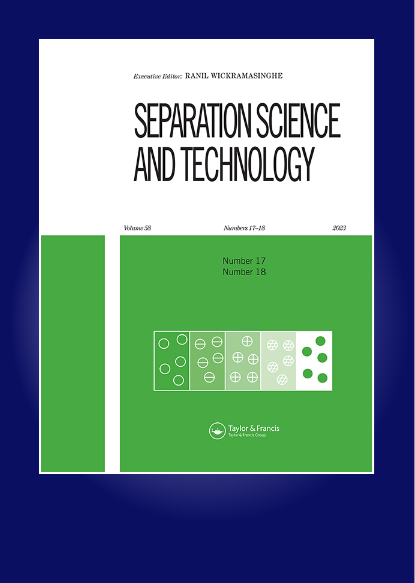Atomic insight into the activation mechanism of feldspar by sodium oleate in flotation separation of quartz and feldspar: XPS, AFM, and molecular dynamics
IF 2.3
4区 工程技术
Q3 CHEMISTRY, MULTIDISCIPLINARY
引用次数: 0
Abstract
ABSTRACTAs we all know, sodium oleate (NaOL) is usually used as a collector for oxidized minerals, but in this study, it is used as an activator for feldspar to separate from quartz. Therefore, the adsorption mechanism, topography, and configurations of NaOL on the quartz and feldspar surface were investigated using X-ray photoelectron spectroscopy, atomic force microscope, and molecular dynamics simulation at the atomic level. The results revealed that NaOL preferably interacted with the Al atoms on the feldspar surface mostly in the form of chemical adsorption and made the feldspar surface blurry and rough, so NaOL could activate feldspar and enhance its flotability. However, NaOL hardly reacts or is easily desorbed from the quartz surface. Thus, the adsorption differences of NaOL between the quartz and feldspar surfaces contributed to realize the effective separation of quartz and feldspar.KEYWORDS: FeldsparquartzNaOLactivatorchemical adsorption Disclosure statementNo potential conflict of interest was reported by the author(s).CrediT authorship contribution statementJiwei Lu: Conceptualization, Methodology, Writing – review and editing. Nailing Wang: Methodology, Writing-original draft, Writing – review and editing, Funding acquisition. Shuangke Li: Conceptualization, Methodology, Resources, Supervision, Funding acquisition. Ziqin Lin: Writing – review and editing. Qingbo Meng: Resources, Supervision. Lixia Li: Resources and Supervision.Additional informationFundingThe authors would like to thank the Fundamental Research Funds for the Central Universities (No. N2201010), GDAS’ Project of Science and Technology Development (No. 2020GDASYL-20200103103), and National Natural Science Foundation of China (No. 51704057) for financial support.油酸钠在石英和长石浮选分离中对长石活化机理的原子观察:XPS、AFM和分子动力学
摘要油酸钠(NaOL)通常被用作氧化矿物的捕收剂,但在本研究中,油酸钠被用作长石与石英分离的活化剂。因此,利用x射线光电子能谱、原子力显微镜和原子水平的分子动力学模拟研究了NaOL在石英和长石表面的吸附机理、形貌和构型。结果表明:NaOL与长石表面的Al原子主要以化学吸附的形式发生良好的相互作用,使长石表面变得模糊粗糙,因此NaOL可以活化长石,增强其可浮性。然而,NaOL几乎不反应或很容易从石英表面解吸。因此,NaOL在石英和长石表面的吸附差异有助于实现石英和长石的有效分离。关键词:长石石英钠活化剂化学吸附披露声明作者未报告潜在利益冲突。卢继伟:概念、方法、写作、审稿、编辑。王乃玲:《方法论》、《写作原稿》、《写作审稿与编辑》、《基金获取》。李双科:概念、方法、资源、监督、资金获取。林子琴:写作-评论和编辑。清博b孟:资源,监管。李丽霞:资源与监管。作者感谢中央高校基本科研业务费专项资金(No. 5)。国家自然科学基金项目(No. 51704057) (N2201010),国家自然科学基金项目(No. 2020GDASYL-20200103103)。
本文章由计算机程序翻译,如有差异,请以英文原文为准。
求助全文
约1分钟内获得全文
求助全文
来源期刊

Separation Science and Technology
工程技术-工程:化工
CiteScore
6.10
自引率
3.60%
发文量
131
审稿时长
5.7 months
期刊介绍:
This international journal deals with fundamental and applied aspects of separation processes related to a number of fields. A wide range of topics are covered in the journal including adsorption, membranes, extraction, distillation, absorption, centrifugation, crystallization, precipitation, reactive separations, hybrid processes, continuous separations, carbon capture, flocculation and magnetic separations. The journal focuses on state of the art preparative separations and theoretical contributions to the field of separation science. Applications include environmental, energy, water, and biotechnology. The journal does not publish analytical separation papers unless they contain new fundamental contributions to the field of separation science.
 求助内容:
求助内容: 应助结果提醒方式:
应助结果提醒方式:


